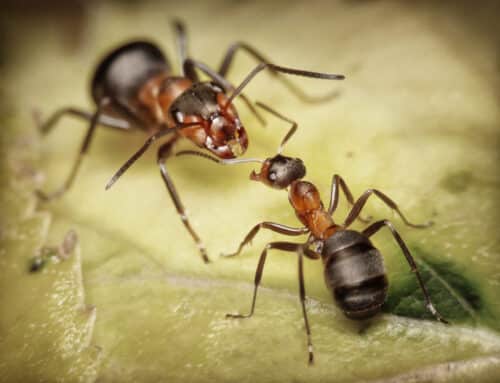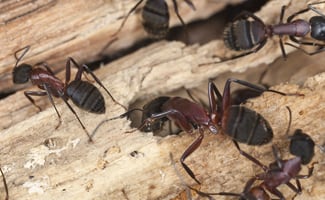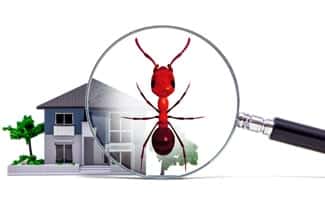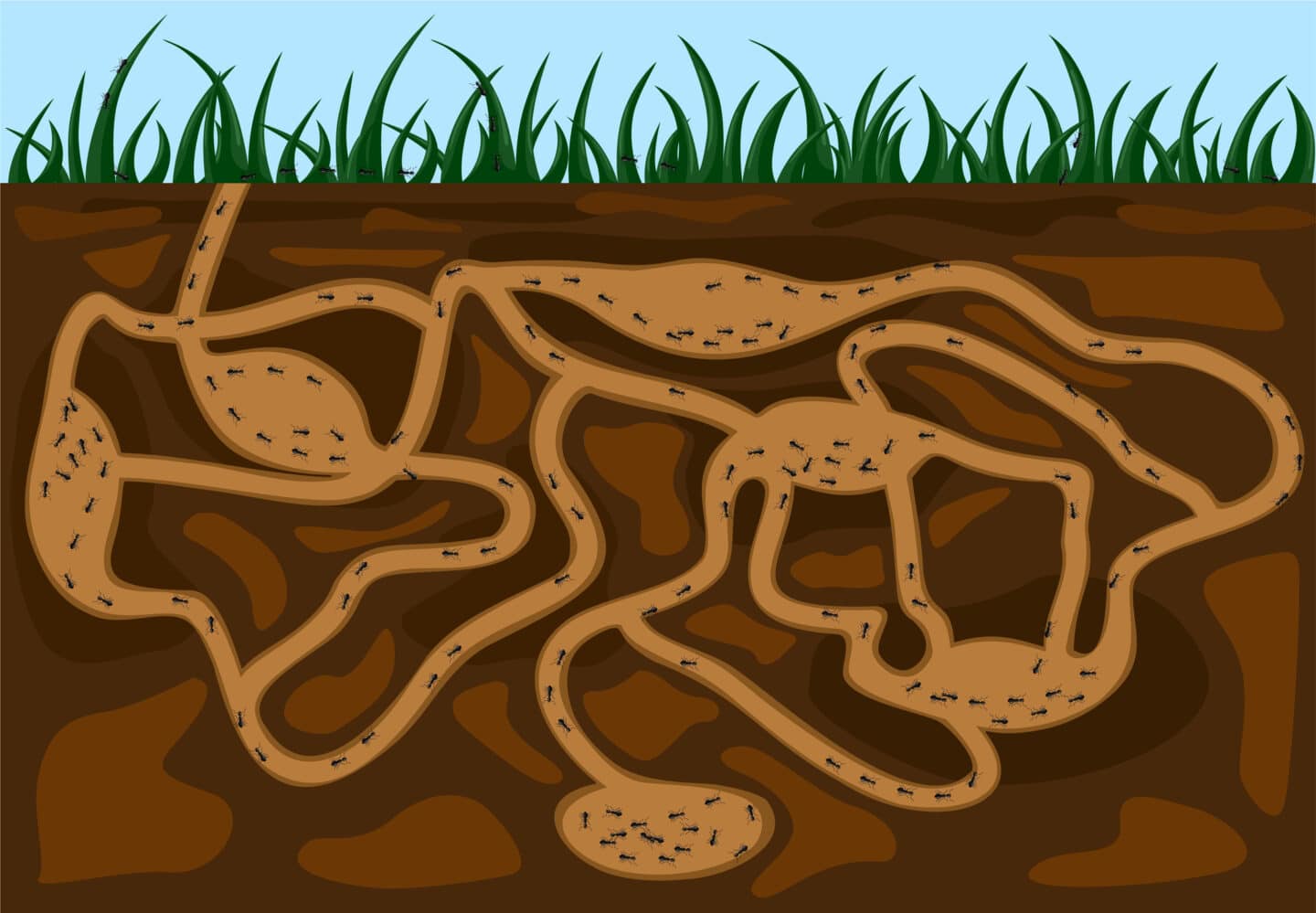
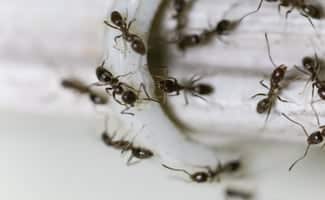
Ants are tiny, social creatures that can create a big impact. Ant colonies are like large families that work together to survive. Just like all the parts of a body work together, all the parts of an ant colony work together. The social advantage is clear: ants are better protected and more populous than solitary insects.
Where Do Ants Build Their Homes?
Answer: almost everywhere on earth! Ants are found on every continent except for Antarctica. These ubiquitous insects find their homes in all sorts of climates and habitats. They build their homes in forests, fields, and deserts. Some reside in cities and lots make their homes underground. One species of migratory army ants even build their temporary nest wherever they stop for the night.
Why Do Ants Build Their Homes?
Ants build their homes for many of the same reasons all species do: safety, protection, and comfort. But the number one reason ants build a nest is to protect their queen. To that end, their colonies are designed in such a way that the queen is most secure. The nest is also a place to store food and act as a hub for these social creatures. Ant nests are marvels of engineering that also tend to the needs of the ants including climate control, drainage, and raising food.
- Protection
Whether deep in the ground, high in the tree, or surrounded by worker ants, you can be sure that the goal of the colony is to keep their queen(s) alive. In addition, ants are also motivated to build a nest to care for, feed, and protect the brood (eggs, larvae, pupae).
- Temperature Control
Ants are ectothermic which means that they have no way to regulate their body temperature internally. They are subject to their environment. They build their nests with ventilation to reduce humidity and they move the brood around to control the temperature and climate that is best for their growth.
- Flood Prevention
Ants are experts at planning for drainage. The last thing they want is to have the nest flood and kill the queen or the brood. So, they have developed ways to drain the water away from the colony. (In fact, ant nests can even benefit homeowners by creating well-drained soil in their lawns.)
- Farming
Ants may forage or hunt for food, but some species farm. That’s right! Some ants, like the leafcutter, cultivate a nutritious fungus garden in their nests that they harvest for food. This sustainable food source grows in the underground chambers designed for it.
How Do Ants Build Their Homes?
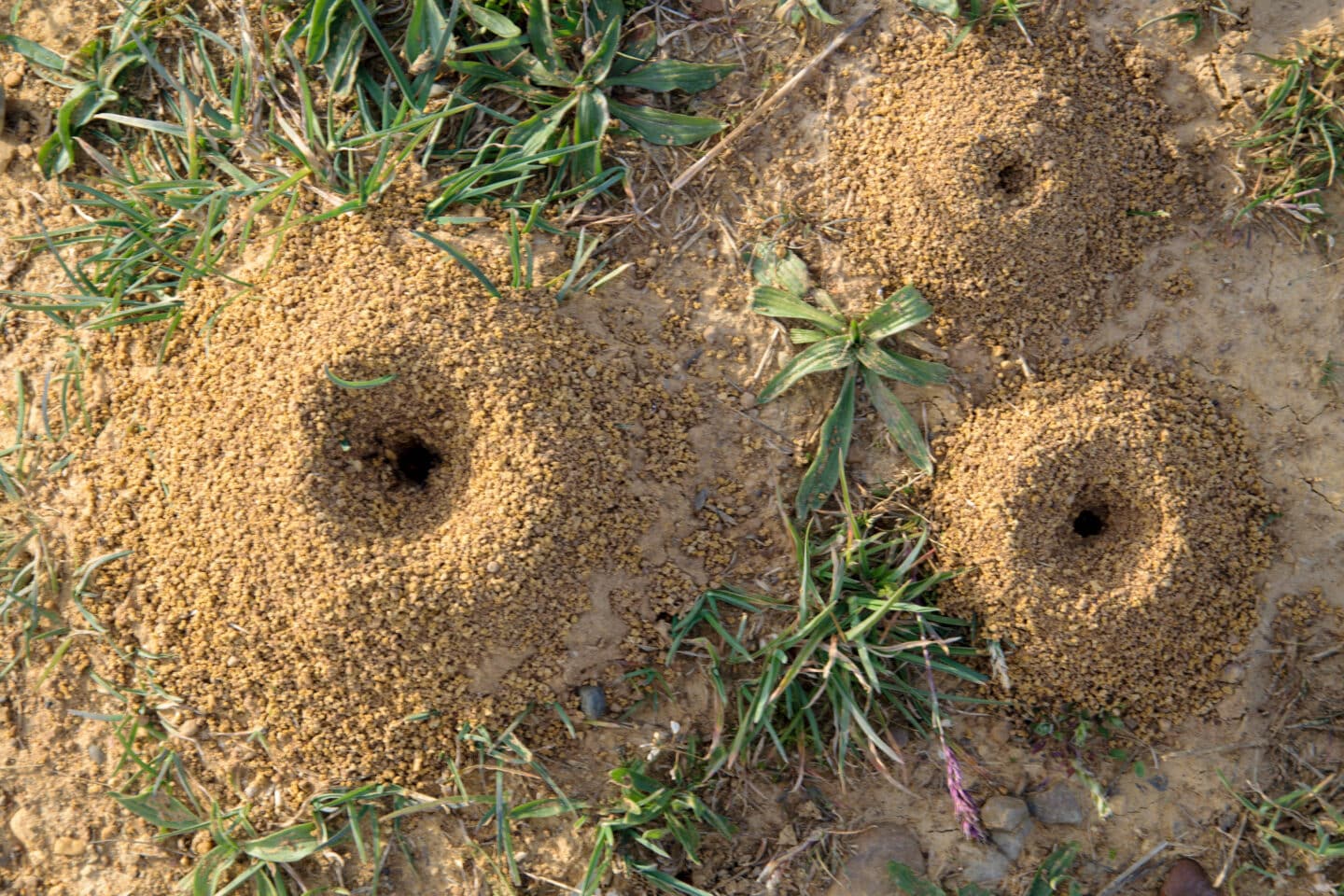
Ants are quite the engineers! Their nests are a fascinating look at their prowess. Whether the ant hill is built above ground with multiple levels and chambers or below ground with a network of tunnels and rooms, it is designed with the needs of the colony in mind.
- Excavation & Tunneling
Ants are master tunnel builders. (Hence the popular activity of an ant farm that lets you watch how these creatures build.) Recently scientists have put these ants’ skills to study. Caltech researchers set out to understand how ants decide how and why to build their tunnels. Ants seem to know just what grains to move efficiently and effectively to build a tunnel. Whether they know what they are doing or not, ants operate within the laws of physics.

The researchers hypothesized that ants move just the grains that are easiest to move (rather like playing Jenga) and the load-bearing grains are part of the structure’s “force chains” (pieces jammed together by the force placed on them). They observed that ants dig as efficiently as possible, using the structure of the enclosure (in the experiment’s case a cup) to provide a solid part of the tunnel and reduce their workload.
They dig in a straight line, the shortest distance between two points. They also dig as steeply as possible. Right up to the “angle of repose”, the steepest angle that a granular material can be piled up before it collapses. (Imagine building a sand castle. When you dump the bucket, the dry sand naturally settles in a cone shape. If you add more sand, the cone gets bigger but the angle of the sides doesn’t change, the additional sand slides down the pile already made. Wet sand has a higher angle of repose and allows you to build walls and towers).
As ants dig, they are subtly changing the force chains around the tunnel. Rearranging the grains strengthens the walls of the tunnel and then as they move the force chains relieve pressure at the working end of the tunnel making it easier for the ants to safely remove material. The extra material is deposited outside the nest creating the distinctive ant hills that humans can observe.
- Reinforcement
Sometimes, ants will use sticks and twigs and add them to their structure. These building materials can help to fortify their structure and also give them better protection from the weather. They will use any seeds that sprout and grow to their advantage as well. This extra growth can camouflage the nest and hide them from enemies.
- Emergent Colony Behavior
One fascinating discovery of the Caltech scientists is that no one ant seems to know exactly what it is doing. It isn’t like each ant is playing a Jenga game. Instead, it appears as if the ants are engaging in emergent colony behavior where all the ant brains are working together like a superorganism to apply the laws of physics.
Nature’s tiny architects might be able to teach us a thing or two. Scientists might even be able to create robotic ants that could dig tunnels for humans!

